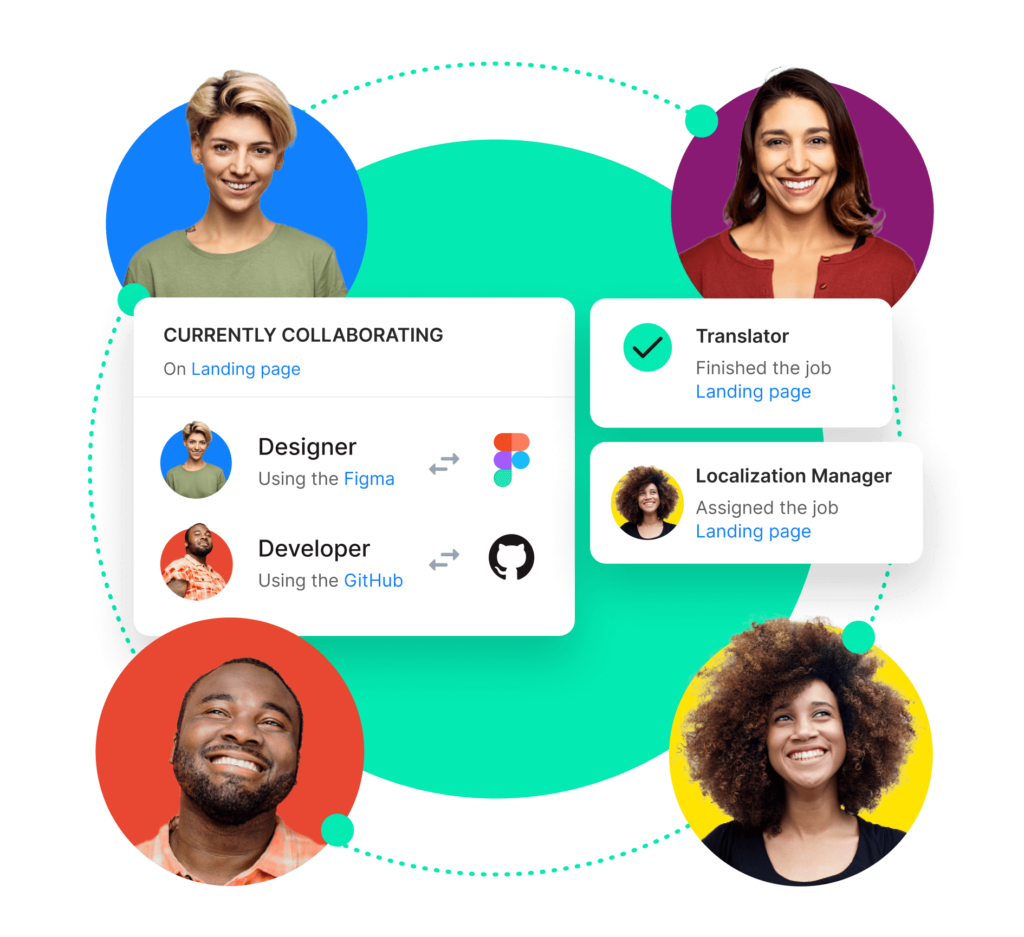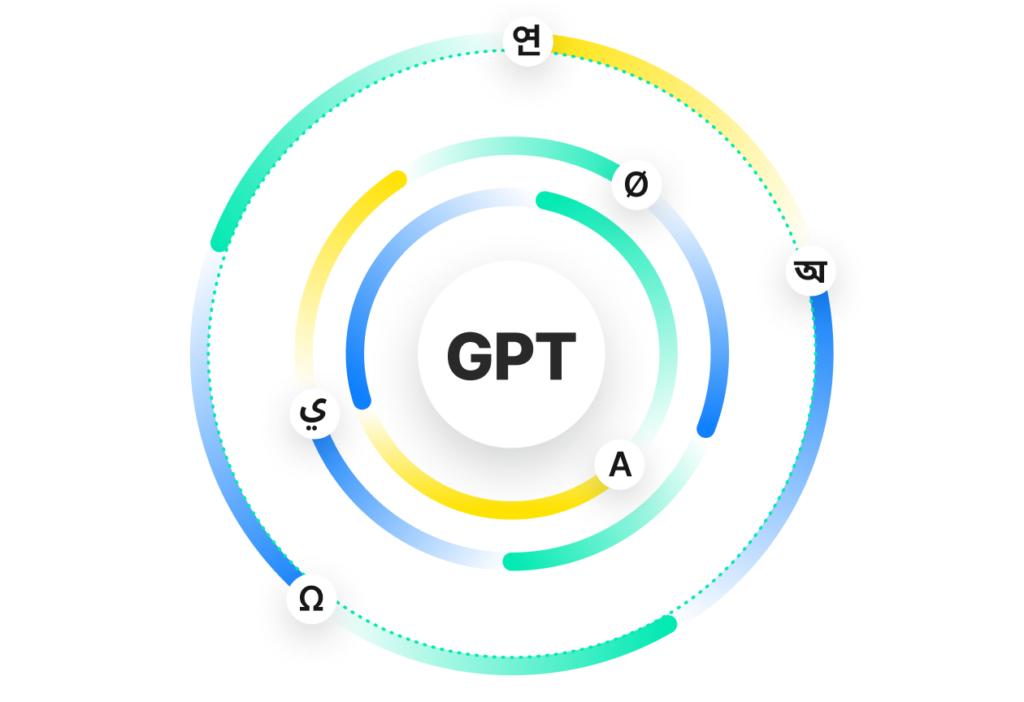The global market has long struggled with disconnected business environments where data is trapped in silos. For brands aiming to expand internationally, this poses a major obstacle. When systems are disjointed, data-driven decision-making becomes nearly impossible. This is where connectivity comes in as a key requirement.
The true power of connectivity lies not in its convenience but in its ability to transform. When you seamlessly connect all your tools, data, and processes in a unified ecosystem, something amazing happens: Global businesses gain a competitive edge that directly translates into more profits.
Cloud-based localization technology is no exception to this transformative potential. By providing a single source of truth for all teams involved in localization across an organization, it has redefined software integration for global growth. Keep reading to explore how you can take full advantage of it with the Phrase Localization Platform.

Unlock global business with the Phrase Localization Platform
Expand into new markets with all the tools you need in one technology suite for high-quality, fast, and scalable localization.
Unveiling the hidden costs of disconnected systems
One of the key drawbacks of disjointed systems is the significant time investment required to locate and consolidate data. When each system operates independently, retrieving the data you need involves navigating through different interfaces, running separate queries, and manually merging the results—resulting in costly delays, duplicate of effort, and human error—all of which add up over time.
Nautical lessons—crossing the inter-system seas
Picture this: Ecommking Inc., an ambitious ecommerce company aiming to expand its global reach, developed a custom translation tool to connect with its product information management (PIM) platform.
However, as the business grew, handling multilingual content became a challenge when translation tasks were outsourced to a language service provider (LSP) with a different localization tech stack.
The absence of integration between Ecommking’s and the LSP’s translation tools led to independent work and disjointed processes, resulting in inconsistent translations filled with errors and omissions.
Last-minute localization issues further caused product launch delays. As a consequence, the company’s reputation suffered in new markets, providing an opportunity for competitors to exploit weaknesses.
This is just one example of the two most pressing challenges that businesses face when dealing with poor software integration in global operations: siloed data and fragmented workflows. Let’s delve into each of these challenges in greater detail.
Siloed data: the pitfalls of disconnected information in global operations
In the realm of global operations and localization, the dangers of siloed data loom large.
One of the immediate consequences of disconnected data is the challenge it poses to obtaining a standardized, complete view of the business. When different departments perceive and interpret data in isolation, inconsistencies arise, leading to a fragmented understanding of performance insights in different target markets. Without a unified approach to data, decision-making becomes fraught with uncertainties and inaccuracies.
The lack of integration across systems also inhibits the identification of trends and patterns crucial for informed decision-making. When data is isolated, it becomes difficult to uncover meaningful correlations and derive actionable insights.
Global businesses need a comprehensive understanding of customer needs, market dynamics, and emerging consumer trends to develop effective growth strategies. Siloed data severely hampers this process, limiting an enterprise’s ability to respond swiftly and capitalize on opportunities.
Fragmented workflows: an obstacle to efficient enterprise operations
Fragmented workflows also pose significant obstacles to efficient and effective enterprise operations, especially in the context of localization. When different teams work in isolation using separate tools, a range of inefficiencies and inconsistencies arise, ultimately impeding growth and damaging brand reputation.
Duplicated effort, resulting from identical tasks executed independently by different teams without coordination, lead to redundancies and higher costs. Inconsistent translations become a common occurrence, resulting in a disjointed brand image across different languages and regions. This lack of cohesion undermines the brand’s credibility and can lead to confusion among customers.
Moreover, the absence of centralized control over assets and resources creates obstacles to efficient asset management and sharing. Without a unified system in place, locating and accessing relevant materials becomes time-consuming and tedious. This decreases productivity and increases costs as valuable time is wasted on searching for information and duplicating work.
Tobias Scherf, Director of Solutions at Phrase, with years of experience working with both growing companies and established global enterprises—said it best:
Manually transferring data between two systems is an inefficient use of time. When you move content in multiple languages between systems by hand, you run a huge risk of errors. For example, languages may get mixed up when improperly imported. This can lead to additional work or issues that you will need to address later on. Eventually, your business may miss significant market opportunities or even experience a loss of revenue or market position, as your competitors move swiftly while you’re still trying to sort everything out.
Transforming global operations with the Phrase Localization Platform
The Phrase Localization Platform offers a transformative solution for global operations by leveraging the power of software integration. With its array of native integrations to popular third-party platforms, robust API, and integration with machine translation (MT) engines, the Phrase Localization Platform empowers businesses to achieve remarkable efficiency gains, faster turnaround times, superior translation quality, and substantial cost savings.
Phrase enables enterprises to create a customized, seamless user experience and achieve the highest level of automation possible in any area of localization. The software integration capabilities of the Phrase Suite are grouped into 3 pillars. Let’s take a closer look at each of them.
50+ native integrations to connect out of the box
The Phrase Localization Platform offers more than 50 native integrations with leading software platforms, making it the most connective and customizable suite of translation automation technology solutions.
Phrase’s integrations are driven by popularity and customer demand, ensuring a seamless, user-friendly experience within your digital ecosystem. Growing organizations and global businesses make the most of Phrase by leveraging native integrations with their preferred technology, including:
| Content management systems | Ecommerce platforms |
| Customer service software | Marketing automation software |
| Design tools | Project management tools |
| Language service providers | Notifications tools |
| Developer tools | Code repositories |
| Cloud storage | Subtitling tools |

Phrase integrations
Automate. Integrate. Collaborate.
Customize your localization workflow with 50+ Phrase integrations and AI-powered machine translation features that connect seamlessly with your digital ecosystem.
Phrase’s API for building custom integrations
In addition to its extensive collection of native integrations, Phrase’s powerful API allows businesses to set up custom integrations tailored to their specific requirements.
Building a custom integration requires careful consideration, as there’s no one-size-fits-all formula to determine the return on investment or the time required for development. For businesses considering building a custom integration, it’s essential to understand the commitment and planning involved.
It’s important to anticipate potential turnover, which can result in additional costs—and even without considering turnover, ongoing maintenance is necessary to ensure the integration remains functional.
Here’s how Martin Svetska, Director of Product Suite, explains how Phrase works with customers on building a custom integration for a specific use case—and why leveraging existing native integrations is the superior choice:
As a partner with a vision, we always prioritize our customers’ needs and continually tailor our solutions to meet their specific requirements. Collaborating with power users and subject matter experts on the customer side always leads to a better custom solution. Nevertheless, if we already provide a pre-built integration for your use case, it’s worth considering the benefits it can bring to your business. Using a native integration saves you valuable time and resources that would otherwise be required to build a complex integration from scratch. It ensures a smoother process with reduced maintenance efforts on your end from the start, allowing you to focus on making the most of our product suite.
Integration with 30+ generic and custom MT engines
The Phrase Localization Platform goes beyond native integrations and API capabilities by offering integration with more than 30 generic and custom machine translation (MT) engines. By connecting to a diverse array of MT engines, Phrase empowers users to achieve a wide range of language coverage, catering to various domains and language pairs.
The integration with these MT engines brings significant improvements in accuracy and translation quality. Through Phrase Language AI, a powerful machine translation add-on to Phrase TMS, users can leverage the most suitable MT engine for each translation task based on the specific language pair and content type.
Phrase Language AI also uses historical performance data to assign quality scores to each machine-translated segment. This valuable feature helps users identify areas that may require post-editing efforts, allowing them to concentrate their resources on enhancing critical aspects of the translation process.
Finally, with its GPT beta program, Phrase also connects to the latest advances of AI and continues to be at the forefront of MT innovation.

Apply for our GPT program
Explore the latest applications of large language models in real-world localization scenarios and experience AI’s latest advances.
Embrace the power of software integration for global success
By embracing software integration in localization, organizations can overcome the challenges posed by fragmented workflows, siloed data, and disconnected systems in localization. This approach enables them to enhance their brand reputation across languages and regions—and unlock a wealth of opportunities for growth.
The Phrase Localization Platform enables global businesses to unleash the power of integrated software with native integrations, robust API capabilities, and seamless machine translation integration. By leveraging these capabilities, you can experience major efficiency gains and cost savings, while also improving translation quality and speed.
Investing in state-of-the-art translation and localization technology, such as the Phrase Localization Platform, gives you the key to unleashing the full potential of connectivity. Join the revolution and discover the advantages of using Phrase today.
Speak with an expert
Want to learn how our solutions can help you unlock global opportunity? We’d be happy to show you around the Phrase Localization Platform and answer any questions you may have.




